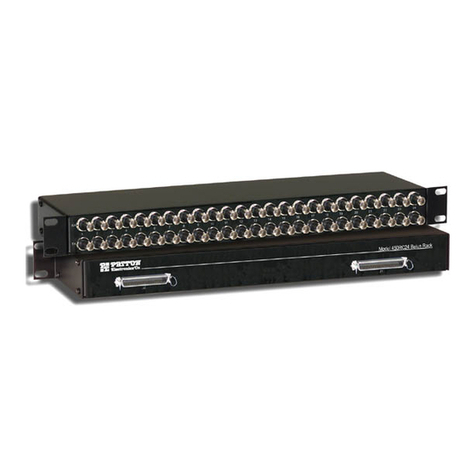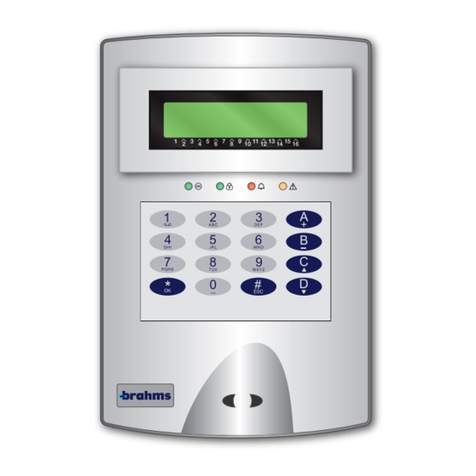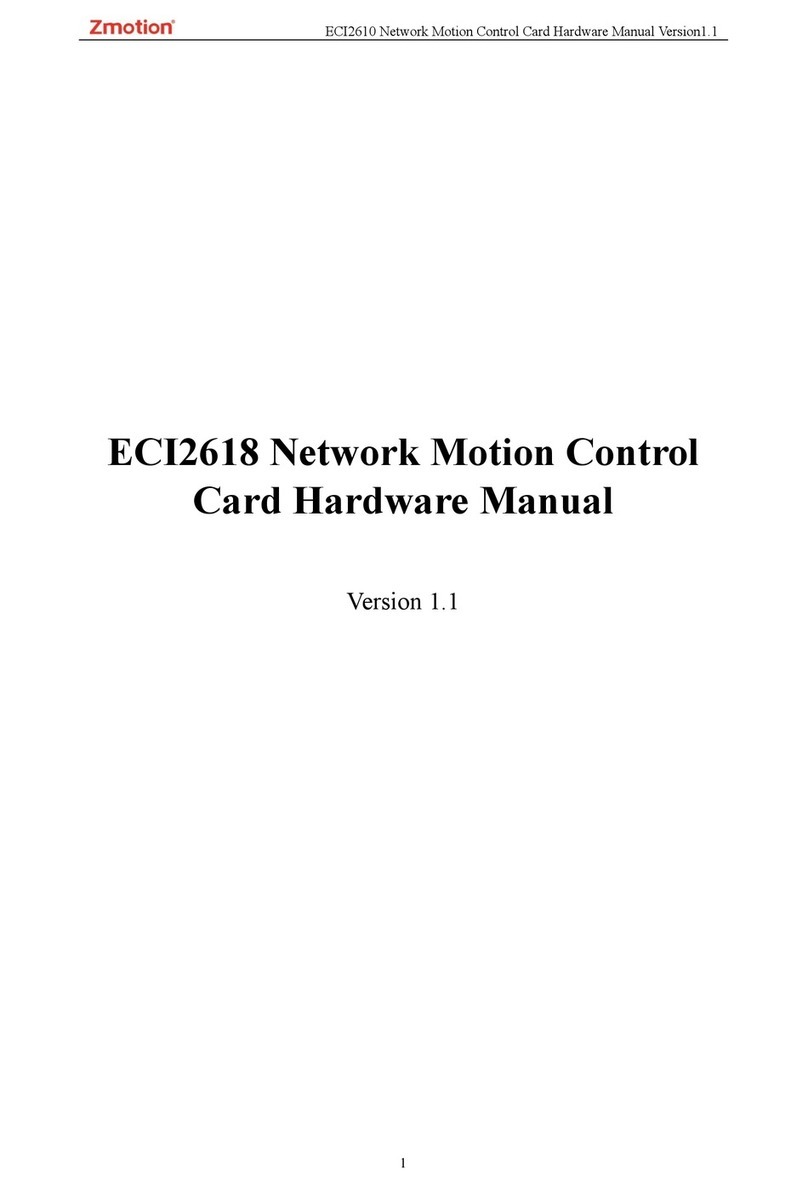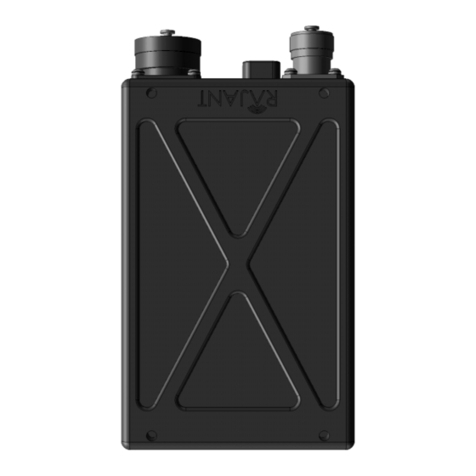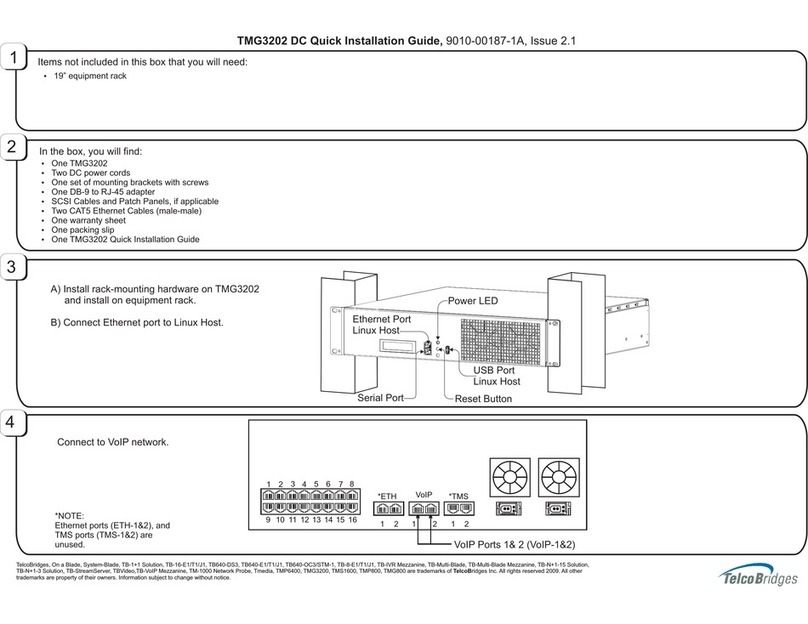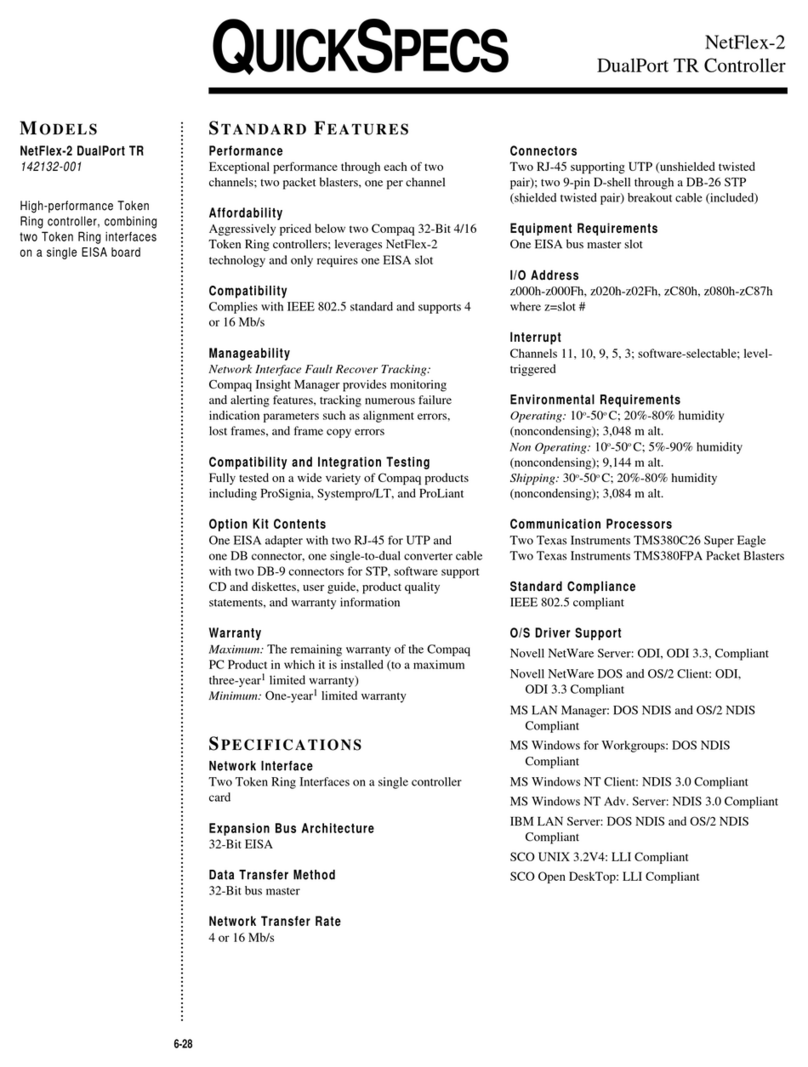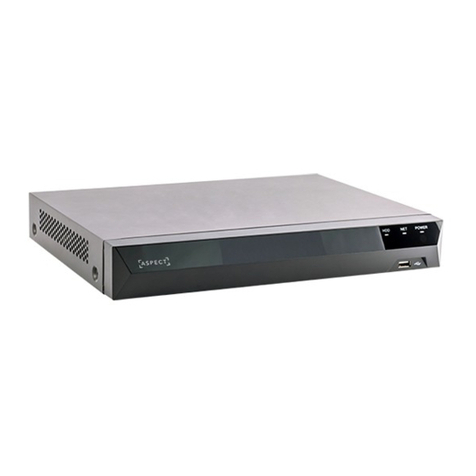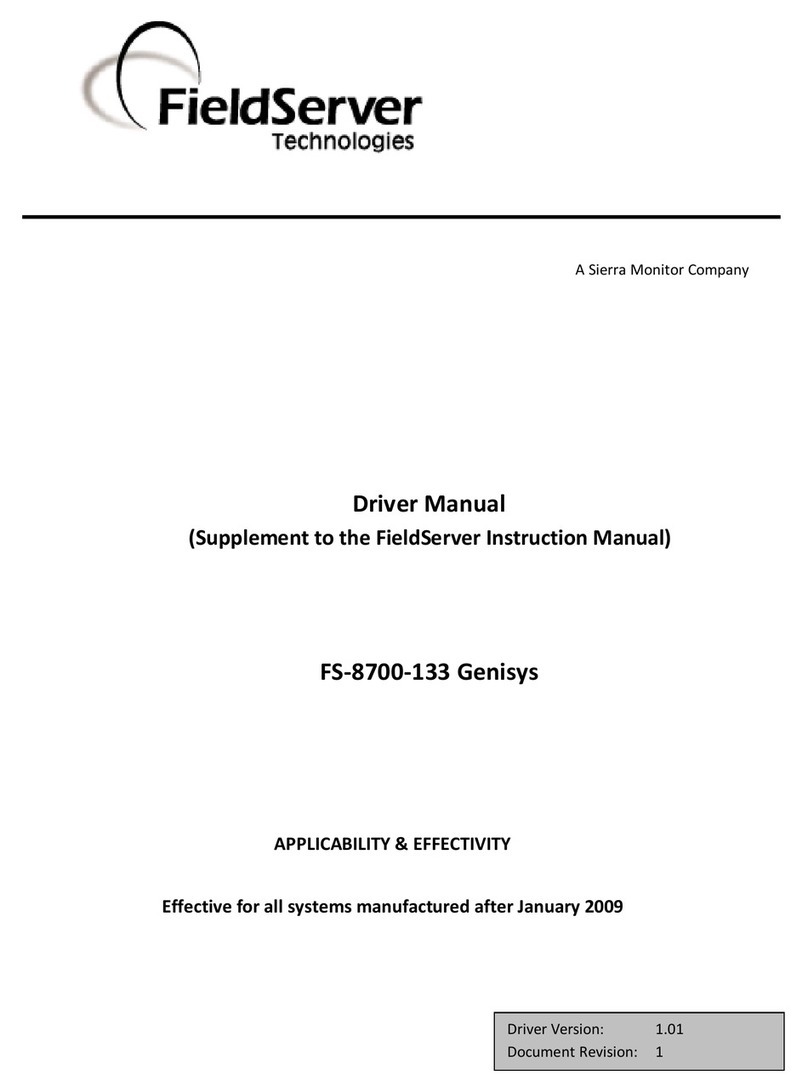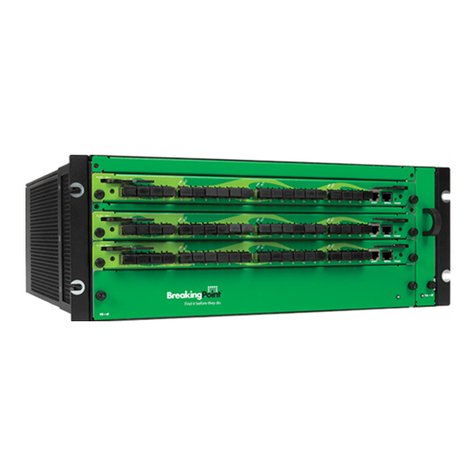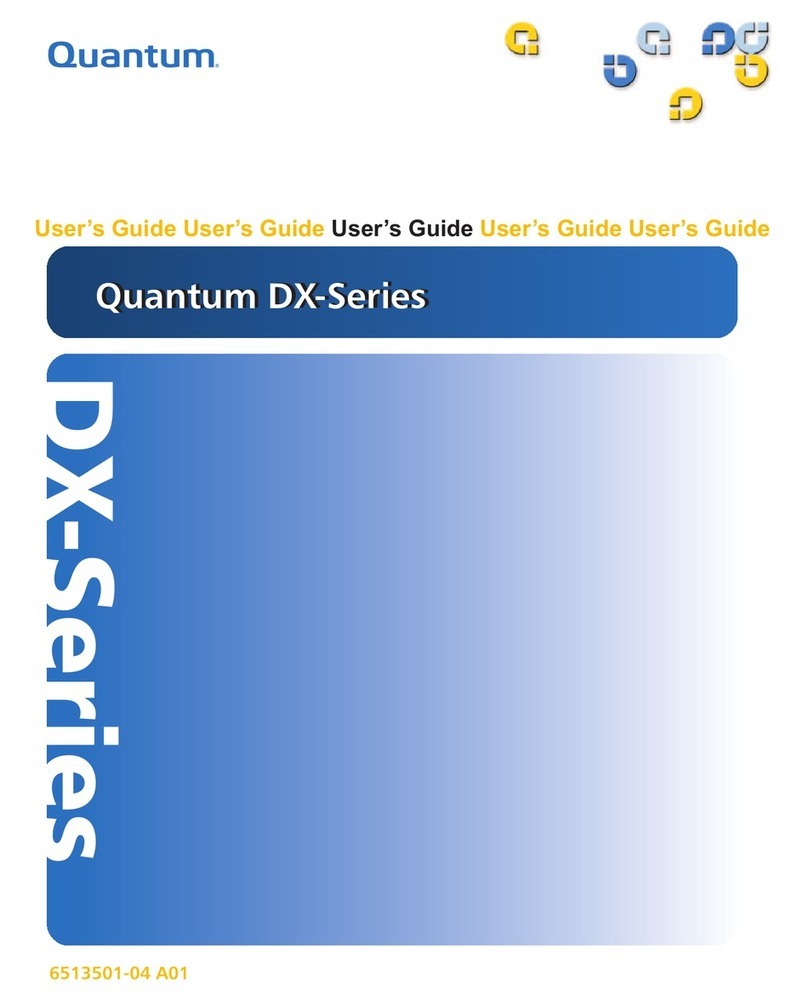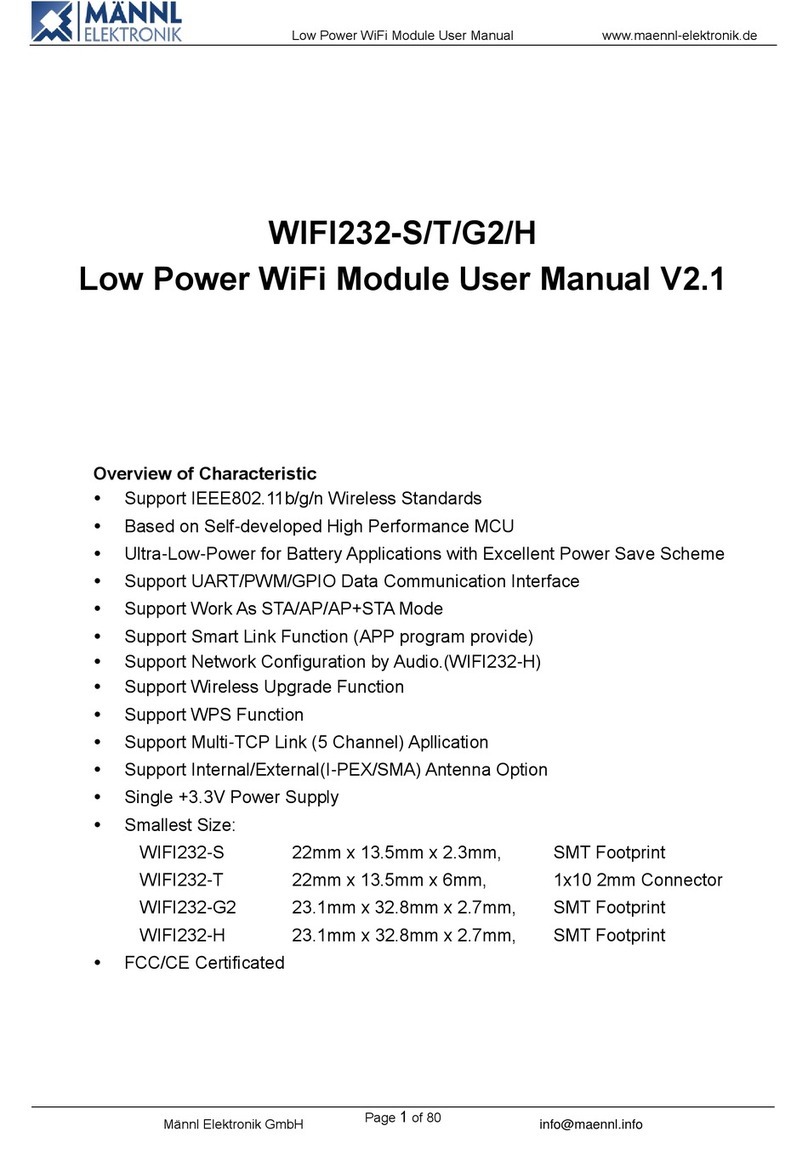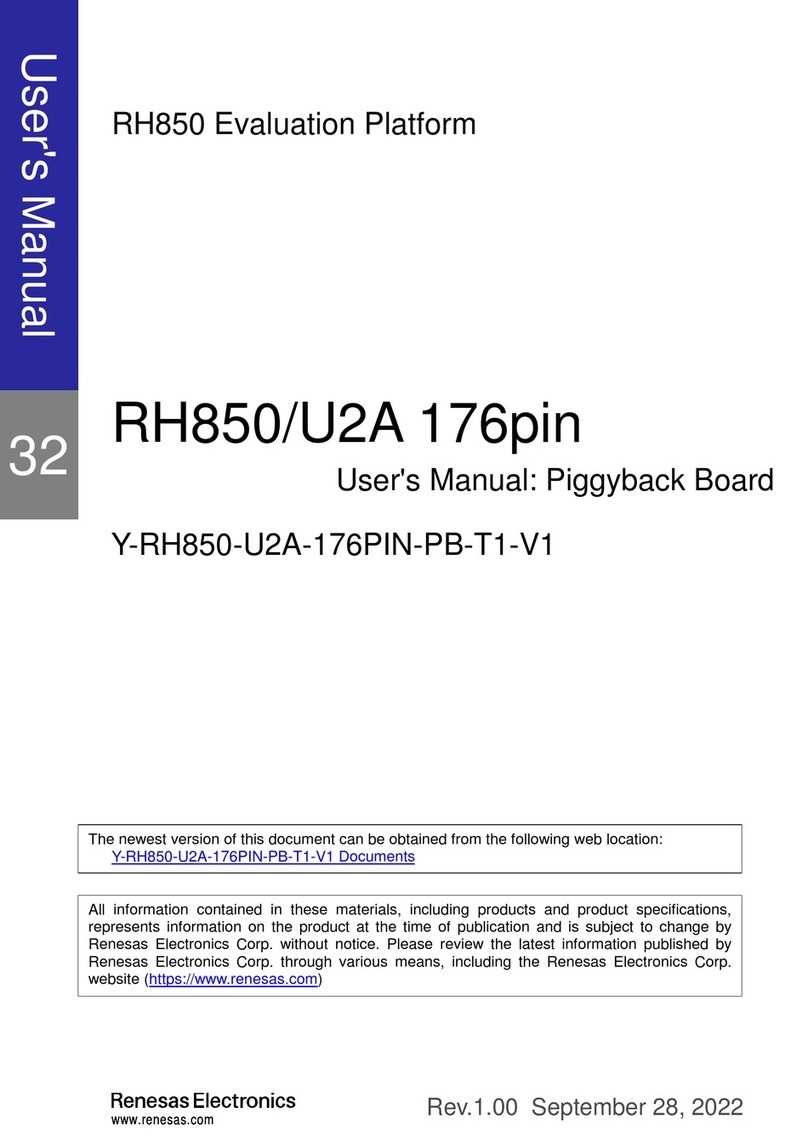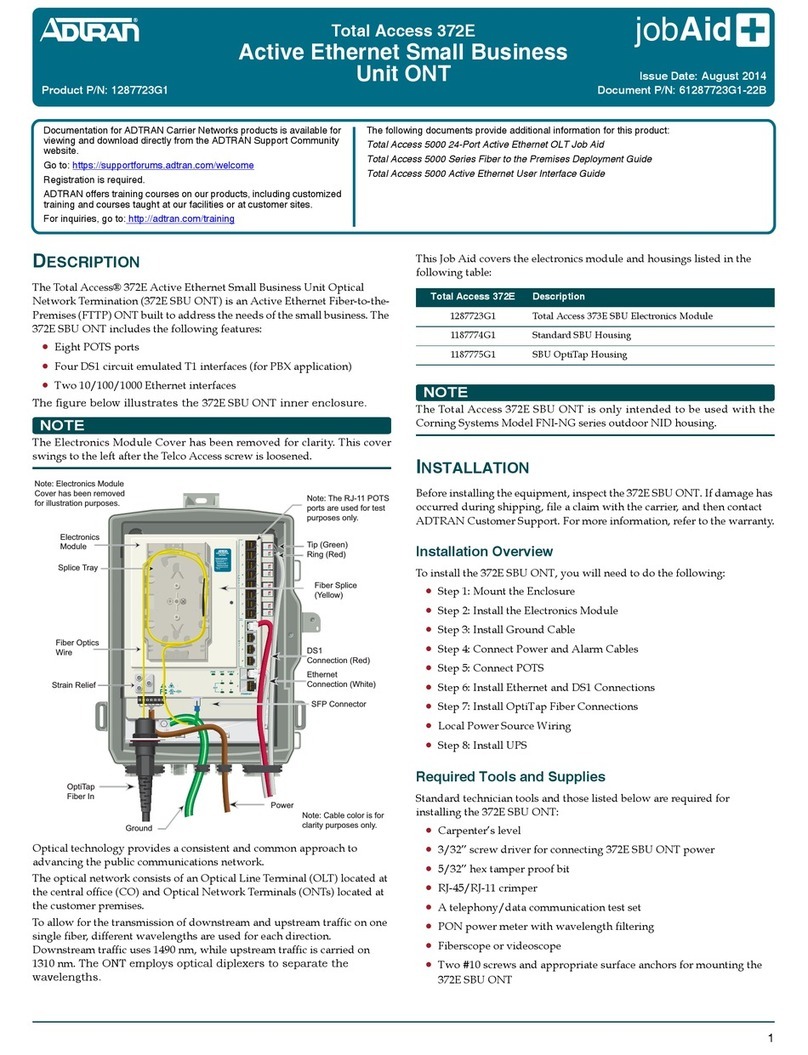AFJ Instruments LT32C/10 User manual

OPERATING MANUAL
ARTIFICIAL MAINS NETWORK (LISN)
LT32C/10 THREE PHASE
REVISION LEVEL 3.8
© AFJ Instruments 2019
Distributed by:
Reliant EMC LLC
3311 Lewis Ave, Signal Hill CA 90755,
408-916-5750, www.reliantemc.com

AFJ LT32C/10 LISN - O erating Manual - rev. 3.8 / 2019-01
4
WARNING!
A LISN (LINE IMPEDANCE STABILISATION NETWORK) IS A VOLTAGE OPERATED
ELECTRICAL DEVICE, WHICH IS DANGEROUS TO LIFE. FOR THIS REASON ONLY
TRAINED PERSONNEL ACQUAINTED WITH THE DANGERS CONNECTED WITH THIS
SHOULD PUT THIS DEVICE INTO OPERATION.
LIKEWISE, SERVICE AND REPAIR WORK MAY ONLY BE CARRIED OUT BY PERSONS,
PLEASE INFORM THE MANUFACTURER AND STATE THE SERIAL NUMBER OF THIS
DEVICE IN CORRESPONDENCE IN THIS REGARD.
A LISN MUST BE CONNECTED TO EARTH BEFORE IT IS CONNECTED TO THE MAINS.
SINCE THE USAGE OF LEAK CURRENT SWITCHES ON THE AC LINE POWERING A LISN
IS NOT POSSIBLE, AN ISOLATION TRANSFORMER MUST BE INTERPOSED BETWEEN
THE MAINS AND THE LISN ITSELF.
THE CONNECTION OF THE SAFETY EARTH MUST BE PERFORMED ANYWAY,
REGARDLESS OF THE USAGE OR NOT OF AN INSULATION TRANSFORMER, BY
CONNECTING THE REAR PANEL GROUND SCREW, TO A SUITABLE EXTERNAL
GROUND REFERENCE. NO OTHER CONNECTION POINTS ON THE LISN CABINET
MUST BE USED FOR SAFETY PURPOSE.
NOTICE:
The AFJ LISN LT32C/10 is su lied in ro er s ecial ackaging due to its heavy
weight. We strongly recommend you to save ackaging for next trans ort.
Distributed by:
Reliant EMC LLC
3311 Lewis Ave, Signal Hill CA 90755,
408-916-5750, www.reliantemc.com

AFJ LT32C/10 LISN - O erating Manual - rev. 3.8 / 2019-01
3
Befo e touching a pe son being elect ocuted b eak, fi st switch off powe supply o send away, using a non-
conductive object, the wi e o the pa t unde HV in contact with the pe son being elect ocuted. Then
immediately the fi st aid elect ical shock p ocedu e must sta t.
If the victim doesn’t b eath, o its hea t doesn’t beats, immediately the elect ical shock fi st aid p ocedu e
must be applied.
A. If the victim doesn’t b eath, roceed as follows:
1. Lay down on the back on a solid surface like ground or avement (not bed or sofa), the erson being
electrocuted
2. Fold the head of the victim backwards kee ing it straight. Lift the neck as much as ossible towards
height (to avoid tongue obstruct the breath way).
3. O en the mouth and lean resolutely on the mouth of the erson being electrocuted and simultaneously
close the nostrils with two fingers.
4. Blow into the mouth (or in to the noose, closing the mouth), in steady way until is thorax lift u again.
5. Remove the mouth to consent the victim to breath assively and observe if its thorax go down.
6. Re eat the cycle, with a rhythm of a breath every 5 second.
NOTE
If do not succeed in entering air into the victim res iratory system, check quickly the head osition and the
erfect air tight around the mouth.
If subsequent endeavor still doesn’t succeed, ut the fingers into the mouth and in the throat, to remove
intruding arts.
If the hel er doesn’t succeed to remove intruding arts, turn the victim on a side and beat some dryly stroke
between the shoulders blade, to release the res iratory channel.
After four quick breaths, sto and check if the heart beat regularly, feeling if carotid rhythm.
If the heart beat, start again the mouth breathing until victim start to breath.
B. If the ca otid beating is absent o unce tain, su ly the artificial circulation, through an external cardiac
com ression.
1. Lean the alm of the hand in the lower half of the breastbone and the other hand u on it.
2. Push down with the shoulders movement, with sufficient strength to com ress the breastbone of about
4 to 5cm.
3. Lift immediately the hands after each com ression to consent the natural thorax ex ansion
4. Re eat the com ression at a rhythm of about one er second. Com ression should be regular constant
and uninterru ted. If the hel er is alone with the victim he may alternate the mouth breath with the
external cardiac com ression at the rate of 2 breaths followed from 15 cardiac com ressions. If the
hel er may be su orted, the rates are of 5 cardiac com ression for each breath; however after 5
cardiac com ression, ASK FOR HELP. Go on with one or both method until the victim has been taken into
the hos ital.
Afte the pe son being elect ocuted sta t again to b eathe, check ca efully about an eventual physical shock
happened. The hysical sock is a colla se state or rostration that interfere against the normal function of the
nervous system; the sym toms are: feeble beats, cold feeling, sickness and allor. To o ose the shock:
1. Stretch out the victim, if ossible with the head lower than the foots;
2. Loosen the garments;
3. Make sure that victim has lentiful breathable air around.
4. Wind the victim with a quilt or garments as soon as ossible, kee ing the atient warm and calm waiting
for aid arrival.

AFJ LT32C/10 LISN - O erating Manual - rev. 3.8 / 2019-01
4
GENERAL INFORMATION
The
information
contained
herein,
are
rovided
in
connection
with
the
usage
of
AFJ
LISN
LT32C/10 three hase V-ty e Artificial Mains Networks (LISN) only.
Such information is ro erty of AFJ Instruments, and cannot be du licated, co ied or re roduced
in whole or art, without rior written consent of the owner.
All information contained herein, are subject to change without rior notice.
All efforts have been made to ensure the accuracy of the contents of this document. However,
the su lier can assume no liability whatsoever for any errors in this manual or their
consequences, direct and/or indirect.
WARRANTY
Systems, o tions and accessories thereof, manufactured and shi ed under the AFJ Instruments
brand name, are warranted to be free from manufacturing defects for a eriod of twelve (12)
months from the date of shi ment.
AFJ Instruments certifies that all roducts are tested and ins ected to com ly with the ublished
s ecifications originating from the Com any. All calibration measurements are traceable to an
inde endent Test House.
The Warranty is rovided “Ex-Works”: therefore, AFJ Instruments will be res onsible of the
amendment of failures arising from ascertained manufacturing defects only.
The Warranty will not be a licable in case of mishandling, unauthorized o ening of the cabinets,
im ro er use, and unauthorized re airs. In such cases, the warranty will be terminated.
A re air under warranty will not extend the original term of validity of the warranty itself.
All roducts or arts thereof, to be subject to a warranty o eration, shall be shi ed to the
a ro riate AFJ Instruments Warranty Centre, at Customer’s charge.
All information in this manual is given in good faith: however, AFJ Instruments shall not be liable
for any loss or damage whatsoever, arising from the use of this manual, the roducts described
herein, or any error or omission in either.
All information contained herein, are subject to change without rior notice.
Distributed by:
Reliant EMC LLC
3311 Lewis Ave, Signal Hill CA 90755,
408-916-5750, www.reliantemc.com

AFJ LT32C/10 LISN - O erating Manual - rev. 3.8 / 2019-01
5
We AFJ Inst uments
DECLARATION OF CONFORMITY
declare, that the below mentioned roducts:
LISN LT32C/10
is herewith confirmed to com ly with the requirements set out in the Council Directive on
the A roximation of the Law of Member States relating to Electromagnetic Com atibility
(89/366/EEC, 92/31/EEC, 93/68/EEC), Low Voltage Equi ment Directive (73/23/EEC) and
EN61010-1 (“Safety of Electrical Measuring A aratus”).
The following standards were a lied:
EMC Di ective 89/366/EEC as amended by 92/31/EEC; 93/68/EEC
EMISSION IMMUNITY
EN 50081-1 (1992):
Electromagnetic Com atibility- Generic
Emission Standard.
Part 1: Residential, Commercial and Light
Industry
EN 50082-1 (1992):
Electromagnetic Com atibility- Generic
Immunity Standard.
Part 1: Residential, Commercial and Light
Industry
Conducted and Radiated Emissions
EN 55022 class A (1994)
Electrostatic Discharge
EN 61000-4-2: 1995
Conducted and Radiated Emissions
EN 55011 Grou I Class A (1991)
Radiated Immunity
EN61000-4-3: 1995
Current Harmonic
EN 61000-3-2 (1995)
Electrical Fast Transients
EN 61000-4-4: 1995
Voltage Fluctuation
EN 61000-3-3 (1995)
Surge Immunity
EN 61000-4-5: 1995
Co yright Acknowledgement: CISPR and EN ublications are subject to the Co yright of IEC.
Distributed by:
Reliant EMC LLC
3311 Lewis Ave, Signal Hill CA 90755,
408-916-5750, www.reliantemc.com

AFJ LT32C/10 LISN - O erating Manual - rev. 3.8 / 2019-01
6
LT32C/10 V-TYPE ARTIFICIAL MAINS OPERATING MANUAL
TABLE OF CONTENTS
SECTION A: GENERAL INFORMATION
A.1
•
Safety
A.2
•
Wo king conditions
A.3
•
Const uction
PAGE: 7
7
7
8
SECTION B: TECHNICAL DESCRIPTION
B.1
•
Gene al
B.2
•
Technical Specifications
B.3
•
F ont and Rea Functional Layout
PAGE: 9
9
10
11
SECTION C: LISN SETUP
C.1
•
Gene al
C.2
•
Selection of the Conducto Unde Test
C.3
•
Use of the A tificial Hand
C.4
•
The Auxilia y Ea th
C.5
•
The A tificial Ea th
PAGE: 12
12
12
12
13
13
SECTION D: OPERATING INSTRUCTIONS
D.1
•
Cu ent load
D.2
•
Measu ement
D.3
•
EUT’s Unde Insulation Class I
D.4
•
EUT’s Unde Insulation Class II
•Handheld Equipment
•Non - Handheld Equipment
PAGE: 14
14
14
15
15
15
15
SECTION E: SWITCHING OPERATION
E.1
•
Gene al
PAGE: 16
16
SECTION F: IMPEDANCE VERIFICATION
F.1
•
Line Impedance Measu ement
PAGE: 16
16
SECTION G: REMOTE CONTROL
G.1
•
Gene al
PAGE:
PAGE:
18
18
Distributed by:
Reliant EMC LLC
3311 Lewis Ave, Signal Hill CA 90755,
408-916-5750, www.reliantemc.com

7
AFJ LT32C/10 LISN - O erating Manual - rev.3.8 / 2019-01
SECTION A: GENERAL INFORMATION
A.1 • SAFETY
This device was built and tested according to CISPR 16-1-2. LISN has been su lied from the factory in
a technical faultless state.
LISN's from AFJ Instruments may use only on ower su lies secured by fuses with rescribed safety
devices.
With no safety condition as:
-Device with visible damages,
-Device with loosed arts,
-Device not working,
-Device after storage under bad conditions (in humid or dirty rooms),
it is not allowed switch on any devices.
A.2 • WORKING CONDITIONS
The allowed tem erature range during use of the device is +0°C to +45°C. In cases of storage or
trans ort this range may exceed by -20°C to +70°C.
It is ossible that condense water originates inside the device due to storage or trans ort conditions.
In this case realize a eriod of 2 hours for acclimatize without use.
The LISN is to use in dry and clean rooms. Avoid conditions like dust, air-humidity, danger of ex losion
and aggressive chemical environment. During use a sufficient air circulation is to realize.
-Do not cover the ventilation holes.
-Internal cooling fans automatically switch on in case of LT32C/10 overheating ONLY.
Distributed by:
Reliant EMC LLC
3311 Lewis Ave, Signal Hill CA 90755,
408-916-5750, www.reliantemc.com

AFJ LT32C/10 LISN - O erating Manual - rev. 3.8 / 2019-01
8
A.3 • CONSTRUCTION
The assignment of the Line Im edance Stabilization Network is to give defined load im edance for
the measurement of the device under test (DUT).
A further task of the LISN is the se aration of the DUT from the mains concerning the high frequency
interference's.
Therefore the construction of the LISN LT32C/10 has a simulation im edance of:
(50µH + 5 Ohm) // 50 Ohm.
The term in brackets is the im edance of the LISN.
The 50 Ohms in arallel is the in ut im edance of the measuring device.
The value is defined in the regulation CISPR 16-1-2 (Fig. A.1).
Because of the common connection of the four simulations im edances (L1, L2, L3, N) to
Earth/Ground, the LISN is a V-ty e and just to use for measuring of non-symmetrical interferences.
To avoid to take an effect from one line to the other the simulation im edances are high frequency
se arated.
Fig. A.1: Example of a tificial mains (50 µH + 5 Ω) // 50 Ω V-netwo k (single phase)
EUT
EUTEUT
EUT
Measuring Receiver
Distributed by:
Reliant EMC LLC
3311 Lewis Ave, Signal Hill CA 90755,
408-916-5750, www.reliantemc.com

AFJ LT32C/10 LISN - O erating Manual - rev. 3.8 / 2019-01
9
SECTION B: TECHNICAL DESCRIPTION
B.1 • GENERAL
In order to get reliable and com arable test results versus the rovisions set forth by the Euro ean
and International regulating Authorities, when measuring distortion signals generated by the DUT
and injected into the mains through its ower cord, standardized and re roducible test conditions
must be used.
Since the ower of the DUT-generated distortion signals, can be com ared to the acce table
standards by measuring the signal am litude across known im edance, an ARTIFICIAL MAINS
NETWORK CIRCUIT (also called LISN, Line Im edance Stabilization Network) is used.
An ARTIFICIAL MAINS NETWORK CIRCUIT has to rovide the SPECIFIED IMPEDANCE OVER THE
WORKING FREQUENCY RANGE (usually, for the case of interest, from 9kHz to 30MHz). Since the
INPUT IMPEDANCE of the MEASURING RECEIVER is 50Ω, the SOURCE IMPEDANCE (out ut of the
LISN), must also be 50Ω, over the s ecified Frequency Range.
Moreover, it has to rovide sufficient isolation to s urious signals arising from the mains su ly
(such signals should be at least 10dB lower than the measurement level, at the measuring receiver),
and also to revent the mains voltage from being a lied to the measuring receiver. The above must
hold for each of the conductors of the mains.
The LISN must also incor orate a switch to enable the connection of the measuring receiver to the
conductor under test, roviding the correct termination to the other mains conductors.
When a disturbance out ut terminal is not connected to the measuring receiver, it shall be
terminated by 50Ω.
The AFJ LISN LT32C/10 has been develo ed for measurement of line-bound interference's according
to standards. It corres onds to CISPR 16-1-2 directives. The construction uses air coils in the current
ath in order to avoid saturation effects with high current strengths. Concerning the construction
the LISN is a V-network because the osition of the vectors of the interference voltage.
The AFJ LISN LT32C/10 is used for the measurements in connection with a s ectrum analyser or a
measurement receiver. The continuous current load-bearing ca acity of 32A is ensured by the use of
large wire cross-sections for the coils. The design of the stabilisation network is continuously low-
im edance for minimum losses.
The com act form of construction, des ite the high current-bearing ca acity, makes easy use of the
AFJ LISN LT32C/10 for the measurement of high currents directly at the iece of use of the consumer
ossible. In this way, measurements of mains-borne interferences can be carried out under
conditions corres onding to ractice.
Distributed by:
Reliant EMC LLC
3311 Lewis Ave, Signal Hill CA 90755,
408-916-5750, www.reliantemc.com

AFJ LT32C/10 LISN - O erating Manual - rev. 3.8 / 2019-01
10
B.2 • TECHNICAL SPECIFICATIONS
Elect ical p ope ties:
Frequency range: 9kHz ÷ 30MHz
Rated voltage: 230Vac rms / 450Vac rms
Im edance: (50µH+5Ω) // 50Ω
Number of Phases: 3+N
Tolerance: <20%
Rated Current load: 2x32A
Max. ermitted frequency DC ÷ 63Hz su lies
Built-in ulse limiter and attenuator 10dB
Te minals:
Out ut im edance: 50Ω
Connector: BNC female
Artificial Hand: 220 F + 510Ω
Artificial PE: 50µH // 50Ω
Gene al Data:
Rated tem erature 0°C to 45°C
Storage tem erature -20°C to +70°C
Dimensions 480 x 550 x 280 mm (W x L x H)
Weight 28kg
Distributed by:
Reliant EMC LLC
3311 Lewis Ave, Signal Hill CA 90755,
408-916-5750, www.reliantemc.com

AFJ LT32C/10 LISN - O erating Manual - rev. 3.8 / 2019-01
11
FRONT AND REAR PANEL FUNCTIONAL LAYOUT
Fig. B.1: LT32C/10 F ont Panel
REFERENCES:
1÷7: System ground connections 2: To three hase DUT ower su ly
3: To single hase DUT ower su ly 4: Mains conductor selection (manual use)
5: Floating artificial earth selector 6: LISN to three hase connector
Fig. B.2: LT32C/10 Rea Panel

AFJ LT32C/10 LISN - O erating Manual - rev. 3.8 / 2019-01
12
SECTION C: LISN SETUP
C.1 • GENERAL
In setting-u the LISN-DUT-Receiver configuration to erform a test, lease strictly adhere the
following sequence:
1. Connect the rotective earth cable between the rear anel screw (indicated by the DIN
“ground” symbol ), and a suitable reference ground.
2. In case AFJ FFT 3010 EMI eceive or AFJ DDA55 Click Analyse are used, connect the LISN 15-
in remote control connector on the receivers, to the corres onding 15- in connector on the
LISN, via the a ro riate logic signal cable su lied. In such case, totally automatic control of
the LISN can be achieved, via the instruments software interface. AFJ LISN LT32C/10 offers
current meter to read and measure Switching O erations and EUT absor tion current, as er
CISPR 14-1 requirements (see Section E).
3. Connect the DUT ower cord to the a ro riate LISN ower out ut.
4. Plug the LISN mains cord, into the LISN socket on the rear anel.
5. Plug the mains cord into an a ro riate mains outlet (if a licable, an isolation transformer
will be inter osed), different from the one used to ower any other instrument.
6. Switch the LISN ower-on, and ower-on the test equi ment.
7. Connect the AFJ FFT 3010 EMI receiver (or any other receiver / s ectrum analyser) or AFJ
DDA55 Click Analyser N 50Ω coaxial in ut to the LISN BNC 50Ω coaxial out ut through
a ro riate coaxial cable.
8. Impo tant: the built-in ulse limiter and attenuator introduces 10dB attenuation during
measurement. Such attenuation shall be com ensated to get ro er results, so it is
recommended to insert a correction factor via the software of the measuring equi ment used
together with the LISN, before starting any measuring session.
This correction factor shall be defined with reference to the Voltage Division Factor data of
the certificate of calibration of the LISN:
-during conducted emission measurement with AFJ FFT 3010 EMI receiver (or any other
receiver / s ectrum analyser), using the data from 9kHz to 30MHz for each hase (L1, L2,
L3 and N);
-during click measurements with AFJ DDA55 Click Analyser, using the data of the four
analysis frequencies (150kHz, 500kHz, 1.4MHz and 30MHz) for each hase (L1, L2, L3 and
N).
C.2 • SELECTION OF THE CONDUCTOR UNDER TEST
The “CONDUCTOR UNDER TEST” (L1, L2, L3 and N), can be selected in manual o eration of the LISN via
the relevant button on the LISN front anel.
In automatic o eration, such selection is erformed via or AFJ FFT 3010 EMI receiver either AFJ DDA555
Click Analyser control software.
Distributed by:
Reliant EMC LLC
3311 Lewis Ave, Signal Hill CA 90755,
408-916-5750, www.reliantemc.com

AFJ LT32C/10 LISN - O erating Manual - rev. 3.8 / 2019-01
13
C.3 • USE OF THE ARTIFICIAL HAND
An artificial hand, simulating 510Ω + 220 F im edance, in accordance with CISPR 16-1 requirements, is
rovided via a s ecific outlet on the front anel of the LISN.
Such outlet, should be used to connect the metal foil wra ing the handle, or holding a endices, of an
a liance, or DUT anyway, built under CLASS II (no Protective Earth circuit) insulation rules, when
subject to test as er CISPR 16 recommendations.
The ur ose of the metal foil, is to simulate the ca acity of a human hand holding the DUT (therefore,
“artificial hand”).
C.4 • THE AUXILIARY EARTH
An auxiliary earth outlet, indicated by the DIN “ground” symbol, is also rovided on the front anel
of the LISN.
It can be used whenever a su lementary ground is required during a measurement.
It is NOT SUITABLE as a PROTECTIVE EARTH for the LISN.
C.5 • THE FLOATING EARTH
During normal o eration, the artificial earth condition must be “non floating” (such condition is
attained by the relevant ushbutton on the LISN front anel, and the LED must be OFF).
Whenever the DUT dimensions are such that the Protective Earth conductor is long enough to show
a significant im edance, or be close to ¼ of a ossible wavelength, or the enclosure has oor
conductivity, the test will be erformed using the non-fused, built-in artificial rotective earth (as
requested, i.e., by VDE 0877 art 1).
The artificial rotective earth, im lements a standardized reference im edance of 50Ω // 50µH, as
requested by the a licable documentation.
The rotection ca abilities of the non-fused rotective earth still hold.
Distributed by:
Reliant EMC LLC
3311 Lewis Ave, Signal Hill CA 90755,
408-916-5750, www.reliantemc.com

AFJ LT32C/10 LISN - O erating Manual - rev. 3.8 / 2019-01
14
SECTION D: OPERATING INSTRUCTIONS
D.1 • CURRENT LOAD
When erforming measurements using LINE IMPEDANCE STABILISATION NETWORKS, the test setu
and the test rocedures, are based on the recommendations of the relevant reference documents.
The maximum current consum tion of the connected test object may not exceed 32A in continuous
o eration. In ambient tem erature of 23°C is resu osed.
At higher ambient tem eratures, a reduction of the maximum current consum tion is necessary. In
any case, a good ossibility of ventilation of the line im edance stabilisation network is to be ensured.
The intake and outlet o enings for the ventilators on the rear of the device must be freely accessible
in any case, in order to ensure good ventilation.
The line im edance stabilisation network has not been rovided with its own rotective device. Please
ensure that no overload results in o eration due to the flow of current. The high-current coils in the
interior of the line im edance stabilisation network are not rotected against overload. An excessively
intake of current would destroy the integrated coils with a thermal overload.
D.2 • MEASUREMENT
The measuring device connected to the signal outlet on the front anel directly dis lays the
interference voltage on the selected conductor L1 to L3 and N.
A LED dis lays the hase selected for measurement in each case.
During the measurement, the test object may only be switched on or off with the ossibilities stated
in its o erating instructions. It’s forbidden cutting off the su ly lines under voltage. This is for safety
reasons and to avoid uncontrollable excessive increases of by such mani ulations due to the energy
stored in the coils of the LISN. At the end of a measurement, it is recommended that the connected
measuring device be removed from the circuit first and that only then the consumer be switched off.
The evaluation of a number of measurements has shown that a good su ression of interference's in
the medium frequency range between 150kHz and 30MHz also has a distinct ositive influence on the
interference reflection above this range of frequencies with a corres onding design and arrangement
of the mains filters.
AFJ Instruments will be leased to hel you with the design of a suitable mains interference
elimination filter.
Distributed by:
Reliant EMC LLC
3311 Lewis Ave, Signal Hill CA 90755,
408-916-5750, www.reliantemc.com

AFJ LT32C/10 LISN - O erating Manual - rev. 3.8 / 2019-01
15
D.3 • EUT’S UNDER INSULATION CLASS I
In general, CLASS I devices ( ower cord with GROUND wire) have good shielding ca abilities thanks to
a low-im edance PE (equi otential) rotection circuit. In such cases, the earth connection, or PE
conductor of the EUT, can be connected to the reference ground of the test setu .
Since, inside the EUT, the ca acitance between the enclosure or Protective Earth terminal, and the
mains conductors is low, at low frequencies the significant com onent for the test results, is the
symmetric com onent. Therefore, in such conditions, it may often occur that all conductors show the
same signal level values.
D.4 • EUT’S UNDER INSULATION CLASS II
HANDHELD EQUIPMENT
In all cases where a GROUND wire is missing, the safety accom lishments are met using so-called
“reinforced, or double insulation” design.
When a handle, or gri , made of insulating material, is rovided to o erate and control the
equi ment, the Reference Standards request that the measurements are erformed somehow
simulating the influence of the resence of a human hand on the cou ling ca acitance between the
mains conductors inside the DUT and the enclosure, by wra ing a metal foil around such handle or
gri . The size of the metal foil must be 60mm in width, as long as needed, and connected to the
“Artificial Hand” outlet on the LISN front anel.
If the housing of the device is made of conducting material, a suitable hold oint of the housing must
be connected to said outlet.
In case of mixed nature of the housing ( artly insulating, artly conducting), the metal foil shall be
wra ed around the insulating art.
Both the metal foil, and the conducting housing, must be connected to the “Artificial Hand” outlet.
NON-HANDHELD EQUIPMENT
Since a GROUND wire is missing, in this case the earth reference is the metal sheet laid on the
measurement table or floor, as s ecified in the Reference Documents. A suitable metal oint on the, if
a licable, non-conducting housing, shall be connected to such reference ground.
U to frequencies of a roximately 3MHz, the cou ling between the DUT and the metal sheet is very
low, thus giving rise to ossible measurement gross errors, under the influence of external ca acitance:
therefore, avoid the roximity of o erators, or objects that may be source of such disturbances.
Above 3MHz, the cou ling becomes increasingly effective, and external erturbations affect the
measurement to a lesser and lesser extent.
Distributed by:
Reliant EMC LLC
3311 Lewis Ave, Signal Hill CA 90755,
408-916-5750, www.reliantemc.com

AFJ LT32C/10 LISN - O erating Manual - rev. 3.8 / 2019-01
16
SECTION E: SWITCHING OPERATION
E.1 • GENERAL
Switching o erations are defined in CISPR 14-1 as EUT su ly current change; no other s ecifications
are re orted.
AFJ LISN LT32C/10 offers current meter to read and measure Switching O erations and EUT
absor tion current, as er CISPR 14-1 requirements.
Exam le of a liances for which the click rate N is derived from the number of switching o erations:
-Thermostats for room heating equi ment;
-Refrigerators;
-Freezers;
-Cooking with automatics lates;
-A liances with one or more boiling lates controlled by thermostats;
-Irons;
-Sewing machine s eed controls;
-Electro mechanical officer machines;
-Slide rojector icture change device.
SECTION F: LT32C/10 LINE IMPEDANCE VERIFICATION PROCEDURE
F.1 • LINE IMPEDANCE MEASUREMENT
Test Equipment:
Network analyzer (f = 9kHz ÷ 30MHz)
AFJ LISN LT32C/10
50Ω BNC dummy load
SCHUKO to BNC ada ter
Ope ations:
1. Switch the Network analyzer ON and wait for warming u enough according to the user manual;
2. Switch the LISN ON;
3. check that the Earth Floating LED is OFF;
4. connect the 50Ω dummy load to the BNC RF out ut of the LISN;
5. connect the network analyzer out ut ort to the SCHUKO lug by means of the relevant ada ter;
6. set the network analyzer for im edance measurement at the out ut ort with the following
arameters:
a) Start Freq.: 10kHz
b) Sto Freq.: 30MHz
c) IFBW: 300Hz
d) Power: -10dBm
Distributed by:
Reliant EMC LLC
3311 Lewis Ave, Signal Hill CA 90755,
408-916-5750, www.reliantemc.com

AFJ LT32C/10 LISN - O erating Manual - rev. 3.8 / 2019-01
17
7. select the line to be measured using the LISN front anel ushbutton;
8. epo t the measured im edance in the following table, according to the related frequencies. The last
two columns carry the CISPR 16-1-2 im edance limits
f [MHz] Z
N
[Ω] Z
L1
[Ω] Z
L2
[Ω] Z
L3
[Ω] Ref. -20% Ref. +20%
0.01 4.29 6.43
0.02 5.80 8.70
0.08 16.95 25.43
0.15 26.17 39.26
0.30 34.60 51.89
0.50 37.77 56.66
0.80 39.08 58.62
1.00 39.41 59.11
2.00 39.85 59.77
3.00 39.93 59.90
8.00 39.99 59.99
15.00 40.00 60.00
20.00 40.00 60.00
30.00 40.00 60.00
NOTE: The connection between measuring instrument and EUT ower lug is made using a custom
ada ter. This fixture is made by a standard male ower lug, and two coaxial connectors. The central
wires of the coax connectors have to be soldered to the ower wires (L, N), while the coax shields
have to be soldered to the Protective Earth conductor.
It is im ortant to kee all connections within the ada ter as short as ossible, to avoid measuring
errors at high frequency.
Distributed by:
Reliant EMC LLC
3311 Lewis Ave, Signal Hill CA 90755,
408-916-5750, www.reliantemc.com

AFJ LT32C/10 LISN - O erating Manual - rev. 3.8 / 2019-01
18
SECTION G: LT32C/10 REMOTE CONTROL
G.1 • GENERAL
To use AFJ LISN LT32C/10 in remote mode, in ut signal REM
in
has to be grounded, so that REM
out
signal (visualized by LED) became active
The signal S0 and S1 coincidence define the line selection as er the following list (Table G.1):
REM
in
S0 S1 REM
out
Active line
H X X H (Led=off) Manual
L H H L N
L L H L L
Table G.1: LT32C/10 signals combination
On the remote control connector there are four signals (Figure G.1):
1. S0 in ut signal;
2. S1 in ut signal;
3. REM
in
in ut signal;
4. REM
out
Out ut signal (o en collector).
To make INPUT SIGNALS active is shall be sufficient utting them to ground.
Figu e G.1: Remote cont ol connecto
Distributed by:
Reliant EMC LLC
3311 Lewis Ave, Signal Hill CA 90755,
408-916-5750, www.reliantemc.com
Table of contents
